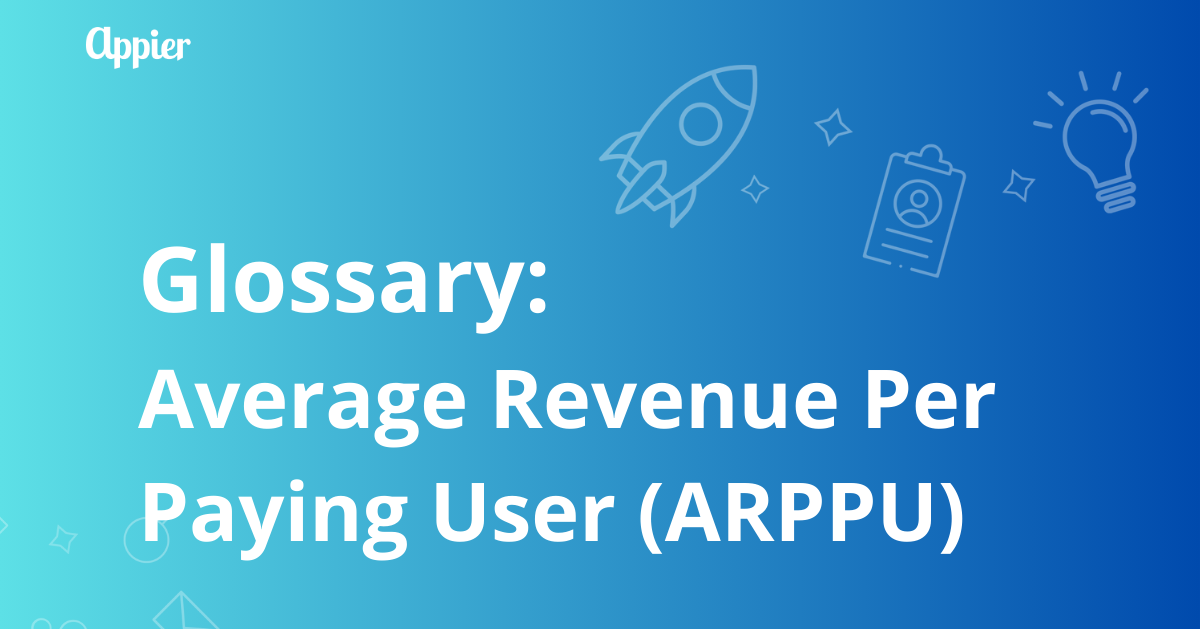5 min read
What is ARPPU?
ARPPU stands for Average Revenue Per Paying User. It’s a key metric used by digital marketers, app developers, and SaaS companies to measure how much revenue, on average, each paying customer generates over a specific period. Unlike ARPU (Average Revenue Per User), which includes all users (even those who never spend a cent), ARPPU focuses only on those who actually make purchases—giving you a clearer picture of your most valuable customers.
Why ARPPU Matters
If you run a freemium app, online game, or subscription service, you probably have a large base of free users and a smaller group of paying users. ARPPU helps you understand the spending habits of this paying segment. This is crucial for:
- Identifying high-value customer segments
- Optimizing pricing strategies
- Tailoring product offerings
- Spotting upsell and cross-sell opportunities
How to Calculate ARPPU
The formula for ARPPU is straightforward:
.png?width=483&height=405&name=formula%20(8).png)
For example, if your app generates $10,000 in a month from 200 paying users, your ARPPU is $50.
Real-Life Examples
Mobile Games
Monster Paradise, a mobile card-battler game by Aeria Games, achieved a peak ARPPU of $90 during the holiday season, with a 40-day average of over $35 in both the US and France. By focusing on community engagement and special in-game events, the game successfully encouraged more spending from its paying users, boosting overall revenue.
SaaS Companies
the popular dating app, reported an ARPPU of $18.48 in Q3 2020, up from $15.99 the previous year. By introducing new premium features and subscription tiers, Bumble increased the average spend of its paying users and improved its monetization strategy.
Subscription Box/E-commerce Businesses
Blue Apron, a meal kit subscription service, raised its ARPPU to $62 by encouraging subscribers to add more meals and premium options to their orders. This approach not only increased the average revenue per paying user but also helped drive higher customer retention and overall profitability.
ARPPU vs. ARPU: What’s the Difference?
|
Metric |
Includes |
Formula |
Use Case |
|
ARPU |
All users (paying + non-paying) |
Total Revenue / Total Users |
Broad business health, user acquisition |
|
ARPPU |
Only paying users |
Total Revenue / Paying Users |
Monetization, pricing, retention strategies |
Tips for Using ARPPU Effectively
- Segment Your Users: Not all paying users are the same. Some buy basic plans, others splurge on add-ons. Segmenting helps you spot high-value groups.
- Track Over Time: Watch how ARPPU changes month-to-month. A rising ARPPU could mean successful upselling; a drop might signal pricing or product issues.
- Balance with Other Metrics: ARPPU is powerful, but don’t ignore metrics like LTV (lifetime value), conversion rate, and churn. Sometimes, increasing ARPPU can reduce the number of payers, so find the right balance.
In Summary
ARPPU is a must-track metric for any business with a mix of free and paying users. It helps you understand, optimize, and grow the value of your paying customers. By focusing on ARPPU, you can make smarter decisions about pricing, product development, and marketing—ultimately driving more revenue from your most engaged users
Appier: Revolutionizing Full-Funnel Marketing with AI-Powered Solutions
In the fast-paced world of digital marketing, Appier gives you the competitive edge. Our AI-powered platforms analyze vast amounts of data in real-time, providing actionable insights that drive smarter decision-making. From automated ad targeting to personalized content delivery, we optimize every aspect of your marketing strategy.
As of 2024, Appier serves more than 1,700 customers globally, spanning various industries from finance to retail. The company's impressive client roster includes renowned gaming brands such as NEXON, SuperPlanet, Murka Games, TapNation, Gameduo.



